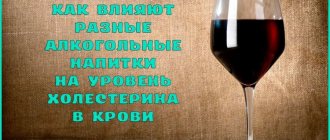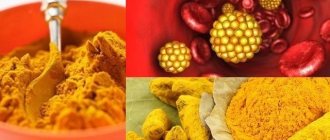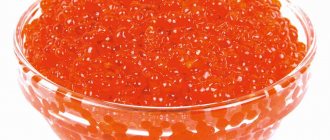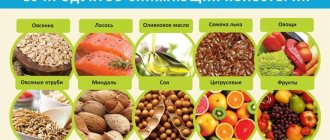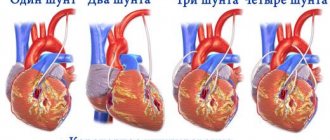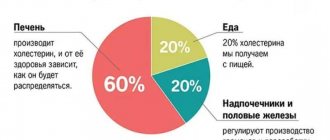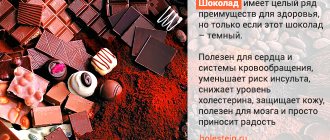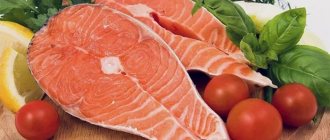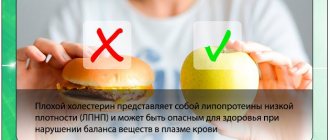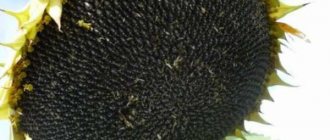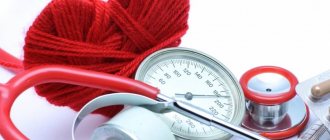General rules
Elevated blood cholesterol for atherosclerosis .
This fat-like substance is necessary for the formation of enzymes , hormones and other things. However, when its metabolism is disrupted and its level in the blood is high, irreversible changes develop in the wall of blood vessels - atherosclerosis, which is dangerous for its complications ( heart attack , stroke , disruption of the blood supply to various organs).
Dangerous in terms of the development of atherosclerosis is considered to be an imbalance between fractions - low-density lipoproteins LDL and high-density lipoproteins (HDL). The former have an atherogenic effect and their high content is a risk of cardiovascular diseases. High-density (“good”) cholesterol is produced by the body. Moderate physical activity promotes its production and at the same time reduces the accumulation of harmful substances, which only comes from foods.
Nutritional therapy has been developed to reduce cholesterol levels. A diet for lowering blood cholesterol levels can be used in the treatment and prevention of diseases - it is suitable for people who monitor their health. Its goal is to improve lipid metabolism and weight loss. The main principle of this diet is the reduction of animal fat, which we get from meat, fatty dairy products, and simple carbohydrates. Polyunsaturated fats (their sources are vegetable oils and nuts), fiber and complex carbohydrates (we get them from vegetables, grains, bran) should predominate in the diet. It is the large amount of fiber that helps remove excess cholesterol from the gastrointestinal tract. The protein content in this therapeutic diet is within normal limits, and can be obtained by consuming a variety of legumes and lean meats.
The amount of bread is no more than 200 g per day; the use of dietary bran bread is also allowed. Salt and the amount of liquid consumed are limited to 1.2 liters. Dishes must be prepared without salt, but it is allowed to add salt to prepared food on the table. Vegetables are eaten raw or stewed, and it is better to boil (bake) meat and fish to reduce fat in the diet. It is important to eat plenty of vegetables at dinner. Daily calorie content is 1400-1500 kcal.
Basic principles of nutrition for high blood cholesterol:
- Grains, vegetables and fruits, containing complex carbohydrates and high amounts of fiber, should make up about 60% of the diet. You need to eat 400 g of vegetables daily (one third fresh) and 200 g of grain products.
- The predominance of vegetable oils in the diet.
- Moderate consumption of permitted dairy products.
- Diet for high blood cholesterol includes fish, chicken and turkey, which are the foods of choice, and lean beef should take second place in the diet.
- The amount of salt is minimal.
- 2-3 eggs per week (unlimited protein).
- Avoid feeling hungry (have fruit snacks on time).
The diet for high cholesterol in women is no different from that for men and the general principles of nutrition remain the same. Total cholesterol in women and men should be no more than 5.2 mmol/l; a figure of 6.19 mmol/l is already considered significantly increased. HDL in women should be at least 0.9 mmol/l and up to 1.9 mmol/l; in men this figure is different - from 0.7 to 1.7 mmol/l.
The onset of menopause has an adverse effect on cholesterol metabolism and is explained by the fact that with the onset of menopause, estrogen decreases, and it regulates the production of “good” cholesterol. The increase in “bad” is facilitated by a woman’s sedentary lifestyle, overeating and consumption of fatty and high-calorie foods.
Diet for women with high cholesterol should contain as much as possible plant foods rich in phytosterols , which control and reduce the level of bad cholesterol:
- wheat germ;
- sesame seeds;
- sunflower seeds;
- flax seed;
- olive oil;
- grape seed oil;
- avocado.
Vegetables and fruits containing pectin : apples, citrus fruits, beets, watermelons and natural vegetable juices. Remember that all purple and red fruits and vegetables contain polyphenols that stimulate the production of good cholesterol: blueberries, strawberries, raspberries, cranberries, cranberry juice, chokeberries, lingonberries, pomegranate, purple and red grapes, plums, eggplants. Green leafy salads and vegetables are also useful: cabbage, lettuce, spinach, sorrel, artichoke and parsley, dill and green onions available to everyone.
It is imperative to include legumes in your diet, which, due to their high fiber content, will remove harmful cholesterol from the intestines. In terms of protein content, they can replace meat.
It is beneficial for older women to consume soy products containing phytoestrogens . Do not forget about proper culinary processing of meat and fish - a minimum of fat when cooking - it is best to bake in the oven, in pots or steamed.
Considering women's craving for sweets, it will be very difficult to give up sweet cream products, chocolate and sweets, pastries, cookies, waffles and limit yourself in sugar. But this must be done. Fatty meat should also disappear from the diet; you will have to give up processed meat (sausage, boiled pork). Pork, lard and bacon are prohibited. Don't forget about the need for physical activity. All this will only bring benefits - your tests will normalize, your weight will drop, and you will consider yourself attractive.
Often, high cholesterol is observed in diseases of the internal organs and endocrine system: nephritis , hypothyroidism , obesity , diabetes mellitus . This combined pathology requires a special approach to nutrition and more serious treatment. In each case, the issue is resolved individually and therapeutic nutrition is prescribed for the underlying disease. For example, what diet is indicated for high cholesterol due to kidney disease? In this case, you need to follow Table No. 7 and its variations. Diet 7 is prescribed for chronic kidney disease and, in addition to limiting salt and the amount of liquid you drink, it involves excluding foods rich in cholesterol (kidneys, liver, egg yolks, brains).
Features of the diet for high cholesterol
You should adjust your diet, remove everything that increases cholesterol levels, and add those dishes that can improve blood composition.
Advice from doctors and nutritionists:
- combine diet with sports exercises;
- stop eating fatty foods;
- quit smoking;
- stop drinking alcohol;
- add eggs to dishes no more than twice a week;
- reduce the amount of sweets;
- avoid fast food;
- stop drinking carbonated drinks;
- Avoid canned and pickled foods.
Nutritionists recommend reducing the amount of cholesterol consumed to 250 mg per day.
For weight loss
In general, overweight people are more likely to have high cholesterol. Therefore, it is necessary not only to strictly follow the nutritional rules, but also to increase the number of sports activities. Experts repeatedly note that after such a diet, weight decreases. The menu should include more products that remove toxins from the body.
For men
It has been scientifically proven that high cholesterol is more common in men. It is recommended to reduce alcohol consumption, quit smoking, play sports, and move more. There is no need to completely remove foods containing fat; it contains vital elements.
Authorized Products
Proper nutrition for high cholesterol should become the norm. What should it be? First of all, you need to exclude meat broths - prepare vegetarian soups; if this is difficult and unusual for you, then you can use weak secondary broth for first courses and carefully skim off the fat. Use potatoes in minimal quantities and it is better to prepare combined vegetable soups, cabbage soup and borscht.
Meat and poultry should be taken of lean types; poultry skin is unacceptable; additional fat should be trimmed from the meat. Since the diet involves limiting fat, the meat should be boiled or baked without adding sour cream, mayonnaise or any fat. Use vegetables as a side dish, not cereal. It is better to cook them for breakfast (oatmeal, buckwheat and brown rice).
Cabbage (all types), carrots, zucchini, pumpkin, eggplant, or salads made from fresh vegetables and green peas will help lower cholesterol levels. The total amount of vegetables eaten per day is at least 400g.
Use virgin vegetable oils to season ready-made dishes. omega-3 fatty acids, which regulate the production of beneficial lipids, is useful in this regard .
Lowering cholesterol levels can be achieved by introducing low-fat sea fish into the diet, but the consumption of meat (chicken) should still be limited to once a week. When it comes to fish, you should choose dietary varieties: hake, haddock, blue whiting, navaga, pollock, pollock.
Bread made from rye, grain flour and bran is allowed. You can use yeast-free bread (with bran, with flax seeds) for snacks and first courses. Milk and fermented milk products are allowed only in low fat content and in limited quantities. Green tea and weak coffee with milk and without sugar, vegetable and fruit juices without sugar are allowed.
Table of permitted products
| Proteins, g | Fats, g | Carbohydrates, g | Calories, kcal | |
Vegetables and greens | ||||
| eggplant | 1,2 | 0,1 | 4,5 | 24 |
| beans | 6,0 | 0,1 | 8,5 | 57 |
| zucchini | 0,6 | 0,3 | 4,6 | 24 |
| cabbage | 1,8 | 0,1 | 4,7 | 27 |
| broccoli | 3,0 | 0,4 | 5,2 | 28 |
| Brussels sprouts | 4,8 | 0,0 | 8,0 | 43 |
| cauliflower | 2,5 | 0,3 | 5,4 | 30 |
| green onion | 1,3 | 0,0 | 4,6 | 19 |
| bulb onions | 1,4 | 0,0 | 10,4 | 41 |
| carrot | 1,3 | 0,1 | 6,9 | 32 |
| cucumbers | 0,8 | 0,1 | 2,8 | 15 |
| squash | 0,6 | 0,1 | 4,3 | 19 |
| salad pepper | 1,3 | 0,0 | 5,3 | 27 |
| parsley | 3,7 | 0,4 | 7,6 | 47 |
| salad | 1,2 | 0,3 | 1,3 | 12 |
| beet | 1,5 | 0,1 | 8,8 | 40 |
| celery | 0,9 | 0,1 | 2,1 | 12 |
| soybeans | 34,9 | 17,3 | 17,3 | 381 |
| asparagus | 1,9 | 0,1 | 3,1 | 20 |
| tomatoes | 0,6 | 0,2 | 4,2 | 20 |
| Jerusalem artichoke | 2,1 | 0,1 | 12,8 | 61 |
| pumpkin | 1,3 | 0,3 | 7,7 | 28 |
| dill | 2,5 | 0,5 | 6,3 | 38 |
| beans | 7,8 | 0,5 | 21,5 | 123 |
| garlic | 6,5 | 0,5 | 29,9 | 143 |
| lentils | 24,0 | 1,5 | 42,7 | 284 |
Fruits | ||||
| avocado | 2,0 | 20,0 | 7,4 | 208 |
| oranges | 0,9 | 0,2 | 8,1 | 36 |
| pomegranate | 0,9 | 0,0 | 13,9 | 52 |
| grapefruit | 0,7 | 0,2 | 6,5 | 29 |
| pears | 0,4 | 0,3 | 10,9 | 42 |
| lemons | 0,9 | 0,1 | 3,0 | 16 |
| mango | 0,5 | 0,3 | 11,5 | 67 |
| tangerines | 0,8 | 0,2 | 7,5 | 33 |
| nectarine | 0,9 | 0,2 | 11,8 | 48 |
| peaches | 0,9 | 0,1 | 11,3 | 46 |
| apples | 0,4 | 0,4 | 9,8 | 47 |
Berries | ||||
| gooseberry | 0,7 | 0,2 | 12,0 | 43 |
| Red currants | 0,6 | 0,2 | 7,7 | 43 |
| black currant | 1,0 | 0,4 | 7,3 | 44 |
Nuts and dried fruits | ||||
| nuts | 15,0 | 40,0 | 20,0 | 500 |
| almond | 18,6 | 57,7 | 16,2 | 645 |
| flax seeds | 18,3 | 42,2 | 28,9 | 534 |
| fenugreek seeds | 23,0 | 6,4 | 58,3 | 323 |
| sunflower seeds | 20,7 | 52,9 | 3,4 | 578 |
Cereals and porridges | ||||
| buckwheat (kernel) | 12,6 | 3,3 | 62,1 | 313 |
| oat groats | 12,3 | 6,1 | 59,5 | 342 |
| cereals | 11,9 | 7,2 | 69,3 | 366 |
| wheat bran | 15,1 | 3,8 | 53,6 | 296 |
Raw materials and seasonings | ||||
| basil | 2,5 | 0,6 | 4,3 | 27 |
| honey | 0,8 | 0,0 | 81,5 | 329 |
Dairy | ||||
| kefir 0% | 3,0 | 0,1 | 3,8 | 30 |
| kefir 1% | 2,8 | 1,0 | 4,0 | 40 |
Cheeses and cottage cheese | ||||
| cottage cheese 0.6% (low fat) | 18,0 | 0,6 | 1,8 | 88 |
| curd tofu | 8,1 | 4,2 | 0,6 | 73 |
Meat products | ||||
| beef | 18,9 | 19,4 | 0,0 | 187 |
Bird | ||||
| chicken fillet | 23,1 | 1,2 | 0,0 | 110 |
| turkey | 19,2 | 0,7 | 0,0 | 84 |
Eggs | ||||
| eggs | 12,7 | 10,9 | 0,7 | 157 |
Fish and seafood | ||||
| fish | 18,5 | 4,9 | 0,0 | 136 |
| seaweed | 0,8 | 5,1 | 0,0 | 49 |
Oils and fats | ||||
| grape seed oil | 0,0 | 99,9 | 0,0 | 899 |
| linseed oil | 0,0 | 99,8 | 0,0 | 898 |
| olive oil | 0,0 | 99,8 | 0,0 | 898 |
| sunflower oil | 0,0 | 99,9 | 0,0 | 899 |
Non-alcoholic drinks | ||||
| mineral water | 0,0 | 0,0 | 0,0 | — |
| instant chicory | 0,1 | 0,0 | 2,8 | 11 |
| green tea | 0,0 | 0,0 | 0,0 | — |
| * data is per 100 g of product | ||||
The effect of fiber on cholesterol
Fiber helps reduce cholesterol, so when dieting, you should eat more foods that contain a lot of it.
Fiber is found in the following products:
- wheat bran;
- cereals;
- nuts;
- sweet peppers, greens, lettuce, green beans, cabbage and other vegetables;
- berries: black currant, grapes, strawberries;
- apples;
- dried apricots;
- raisin.
By increasing the amount of fiber in your diet, you can significantly reduce cholesterol levels.
Fully or partially limited products
Excluded: pork, cooking fats, refined vegetable oil, margarine, butter, duck and goose meat, offal (kidneys, brains, liver), sausages and smoked meats. Fatty fish, fish roe (contains a large amount of cholesterol), crayfish, shrimp, crabs and any canned fish, including cod liver, are prohibited.
You should not consume puff pastry and pastry products, highly extractive meat, fish, or mushroom broths. Cream, fatty cottage cheese and sour cream are not allowed in the diet. Prohibition of consumption of chocolate, full-fat ice cream, products with cream and products with palm and coconut oil. Mayonnaise and ketchup should not be used as sauces.
Limit:
- beef (1-2 times a week);
- red fish;
- egg yolks;
- potato;
- fatty cheeses;
- nuts;
- buckwheat;
- honey.
Table of prohibited products
| Proteins, g | Fats, g | Carbohydrates, g | Calories, kcal | |
Fruits | ||||
| bananas | 1,5 | 0,2 | 21,8 | 95 |
Nuts and dried fruits | ||||
| raisin | 2,9 | 0,6 | 66,0 | 264 |
Cereals and porridges | ||||
| semolina | 10,3 | 1,0 | 73,3 | 328 |
| white rice | 6,7 | 0,7 | 78,9 | 344 |
Flour and pasta | ||||
| pasta | 10,4 | 1,1 | 69,7 | 337 |
Bakery products | ||||
| bagels | 16,0 | 1,0 | 70,0 | 336 |
| bagels | 16,0 | 1,0 | 70,0 | 336 |
| crackers | 11,2 | 1,4 | 72,2 | 331 |
Confectionery | ||||
| jam | 0,3 | 0,2 | 63,0 | 263 |
| jam | 0,3 | 0,1 | 56,0 | 238 |
| candies | 4,3 | 19,8 | 67,5 | 453 |
| pastry cream | 0,2 | 26,0 | 16,5 | 300 |
Ice cream | ||||
| ice cream | 3,7 | 6,9 | 22,1 | 189 |
Cakes | ||||
| cake | 4,4 | 23,4 | 45,2 | 407 |
Chocolate | ||||
| chocolate | 5,4 | 35,3 | 56,5 | 544 |
Raw materials and seasonings | ||||
| ketchup | 1,8 | 1,0 | 22,2 | 93 |
| mayonnaise | 2,4 | 67,0 | 3,9 | 627 |
Dairy | ||||
| cream | 2,8 | 20,0 | 3,7 | 205 |
| sour cream 30% | 2,4 | 30,0 | 3,1 | 294 |
| sour cream 40% (fat) | 2,4 | 40,0 | 2,6 | 381 |
Cheeses and cottage cheese | ||||
| cheese | 24,1 | 29,5 | 0,3 | 363 |
| cottage cheese 18% (fat) | 14,0 | 18,0 | 2,8 | 232 |
Meat products | ||||
| pork | 16,0 | 21,6 | 0,0 | 259 |
| pork liver | 18,8 | 3,6 | 0,0 | 108 |
| pork kidneys | 13,0 | 3,1 | 0,0 | 80 |
| pork fat | 1,4 | 92,8 | 0,0 | 841 |
| salo | 2,4 | 89,0 | 0,0 | 797 |
| beef liver | 17,4 | 3,1 | 0,0 | 98 |
| beef kidneys | 12,5 | 1,8 | 0,0 | 66 |
| beef brains | 9,5 | 9,5 | 0,0 | 124 |
| mutton | 15,6 | 16,3 | 0,0 | 209 |
Sausages | ||||
| smoked sausage | 16,2 | 44,6 | 0,0 | 466 |
| smoked sausage | 9,9 | 63,2 | 0,3 | 608 |
| sausages | 10,1 | 31,6 | 1,9 | 332 |
| sausages | 12,3 | 25,3 | 0,0 | 277 |
Bird | ||||
| smoked chicken | 27,5 | 8,2 | 0,0 | 184 |
| duck | 16,5 | 61,2 | 0,0 | 346 |
| smoked duck | 19,0 | 28,4 | 0,0 | 337 |
| goose | 16,1 | 33,3 | 0,0 | 364 |
Fish and seafood | ||||
| smoked fish | 26,8 | 9,9 | 0,0 | 196 |
| salted fish | 19,2 | 2,0 | 0,0 | 190 |
| Red caviar | 32,0 | 15,0 | 0,0 | 263 |
| black caviar | 28,0 | 9,7 | 0,0 | 203 |
| squid | 21,2 | 2,8 | 2,0 | 122 |
| shrimps | 22,0 | 1,0 | 0,0 | 97 |
| salmon | 19,8 | 6,3 | 0,0 | 142 |
| sturgeon | 16,4 | 10,9 | 0,0 | 163 |
| canned fish | 17,5 | 2,0 | 0,0 | 88 |
| semi-finished fish products | 12,5 | 6,7 | 14,7 | 209 |
| sardine | 20,6 | 9,6 | — | 169 |
| mackerel | 18,0 | 13,2 | 0,0 | 191 |
| cod (liver in oil) | 4,2 | 65,7 | 1,2 | 613 |
| boiled oysters | 14,0 | 3,0 | — | 95 |
| fresh oysters | 14,0 | 6,0 | 0,3 | 95 |
Oils and fats | ||||
| butter | 0,5 | 82,5 | 0,8 | 748 |
| creamy margarine | 0,5 | 82,0 | 0,0 | 745 |
| coconut oil | 0,0 | 99,9 | 0,0 | 899 |
| palm oil | 0,0 | 99,9 | 0,0 | 899 |
| rendered beef fat | 0,0 | 99,7 | 0,0 | 897 |
| cooking fat | 0,0 | 99,7 | 0,0 | 897 |
| rendered pork fat | 0,0 | 99,6 | 0,0 | 896 |
Non-alcoholic drinks | ||||
| cola | 0,0 | 0,0 | 10,4 | 42 |
| lemonade | 0,0 | 0,0 | 6,4 | 26 |
| Pepsi | 0,0 | 0,0 | 8,7 | 38 |
| sprite | 0,1 | 0,0 | 7,0 | 29 |
| * data is per 100 g of product | ||||
Magnesium for high cholesterol
It has been scientifically proven that eating foods that contain large amounts of magnesium lowers blood cholesterol.
Table of magnesium content in products, per 100 g:
| the product's name | amount, in mg |
| wheat bran | 590 |
| sesame | 540 |
| cocoa powder | 448 |
| sunflower seeds | 370 |
| coffee | 320 |
| chocolate | 300 |
| black caviar | 300 |
| cashew nuts | 270 |
| pine nuts | 270 |
| buckwheat | 258 |
| peanut | 210 |
| hazelnut | 160 |
| oat flakes | 160 |
| walnuts | 160 |
| rice | 140 |
| pearl barley | 130 |
| Red caviar | 129 |
| chickpeas | 126 |
In addition, magnesium is also found in other foods, for example, dates, cottage cheese, dried fruits, and potatoes. It is quite easy to provide the body with the necessary amount of magnesium.
For those who have high blood cholesterol, it is necessary to ensure that foods that contain magnesium are always present in their diet.
Menu (Power Mode)
The cholesterol diet menu is designed for 5 meals a day. Since you should not allow yourself to feel hungry during the day or in the evening, you are allowed to eat an apple, grapefruit, carrots or drink a fermented milk product. A sample menu for several days might look like this:
First option
| Breakfast |
|
| Lunch |
|
| Dinner |
|
| Afternoon snack |
|
| Dinner |
|
Second option
| Breakfast |
|
| Lunch |
|
| Dinner |
|
| Afternoon snack |
|
| Dinner |
|
Third option
| Breakfast |
|
| Lunch |
|
| Dinner |
|
| Afternoon snack |
|
| Dinner |
|
Below is a table of low cholesterol from which you can make up your diet.
| Products name | Featured | Prohibited |
| Fish | Lean sea fish (hake, blue whiting, pollock, navaga, pollock, haddock) and pike three times a week. | Salmon, mackerel, sardine, eel, mackerel, herring, oysters, caviar, shrimp, prepared fish, river fish in limited quantities. |
| Eggs | Up to 3 pieces per week. | Egg yolk. |
| Fats | Sunflower, corn, olive or soybean oils, up to 2 tablespoons per day. | Lard, margarine, palm and coconut oil, butter, animal fat. |
| Meat | Veal, rabbit, turkey, chicken, lean beef once or twice a week. The bird is allowed without skin. | Pork, fatty beef, fatty lamb, duck and goose meat, sausages, liver, kidneys, brain pates, sausages, sausages. |
| Dairy | Skim milk, low-fat kefir, yogurt, cheeses up to 20%, low-fat cottage cheese. | Full-fat cottage cheese, sour cream, cream, ice cream, curd mass, condensed milk, processed cheese. |
| Vegetables | Fresh and frozen, corn and beans. | Potatoes and potato snacks. |
| Fruits | Everything except banana and grapes, as well as dried fruits. | Sugared fruits, pistachios and peanuts, hazelnuts. |
| Cereals | Whole grain bread, brown rice, oatmeal, whole grain pasta. | White rice, semolina, limit buckwheat. |
| Bakery | Oatmeal cookies, bread rolls, dry cookies, “Fitness” cookies. | Biscuits, pastries, rolls, cakes, puff pastry products. |
| Sweets | Low-fat puddings, jellies without added sugar, fruit ice cream. | Chocolate, pastry cream, toffee, marmalade, pastille, sugar, syrups. |
| Beverages | Sugar-free juices, green tea, weak coffee, still mineral water. | Cocoa with milk, coffee with cream, alcoholic and sweet carbonated drinks. |
Polyphenols in berries and fruits for patients with atherosclerosis
Polyphenols are substances that help normalize lipoprotein levels. Polyphenols are found in berries and fruits.
The most beneficial substances are contained in the following products:
- pomegranate;
- blueberry;
- red grapes;
- cranberry;
- raspberries;
- apples.
Products containing polyphenols must be consumed regularly, only then can they normalize cholesterol levels.
In order to get the maximum amount of polyphenols from berries and fruits, you need to know how to eat and cook them correctly.
Rules of use:
- avoid heat treatment;
- eat fresh, unpeeled;
- do not add sugar to juices;
Products should be added to the menu regularly throughout the day. A person needs 100 mg of polyphenols per day.
Recipes
Fish baked with vegetables
0.5 kg pike perch fillet, 2-3 tomatoes, zucchini, eggplant, lettuce pepper, onion, 2 cloves of garlic, 2 tbsp. spoons of vegetable oil.
Roughly chop the onion, garlic, zucchini and eggplant. Mix the vegetables, season with pepper, vegetable oil, Provençal herbs and marinate for 30 minutes. Also grease the fish fillet with oil and season with herbs. Place the prepared vegetables on foil, place the fish fillet on top and cover with small tomatoes. Bake for 15-20 minutes.
Fish baked with vegetables and cheese
Hake fillet 500 g, carrots, onions, tomatoes, low-fat cheese 50 g, vegetable oil.
Cut the fillet into portions, marinate in spices and allspice. In a frying pan, simmer finely chopped onion and grated carrots, adding a little vegetable oil. Place the hake fillet in a small dish, cover with a layer of stewed vegetables and slices of chopped tomato. Bake for 20 minutes, sprinkle with grated cheese at the end and place in the oven for another 3 minutes.
Baked chicken breast
Chicken fillet 300 g, fresh vegetables and herbs to taste, olive oil 1 tbsp, milk 0.25 cup, garlic.
Lightly beat the chicken fillet and marinate in olive oil with garlic, rosemary and milk for half an hour. Place in pan and bake. Season the finished dish with salt and serve with any fresh vegetables.
Chicken fillet with green beans
One chicken fillet, 300 g beans, pepper, spices, olive oil, salt.
Cut the chicken fillet into cubes and simmer until half cooked in a saucepan with a little water. Add frozen green beans, spices to taste and simmer under the lid until the chicken is completely cooked. Before serving, add herbs, olive oil and a little salt. Serve warm.
Other popular folk remedies
Reducing cholesterol with folk remedies is possible using the following recipes:
- Propolis. The use of alcohol tincture helps reduce cholesterol levels. Treatment is carried out as follows: 30 minutes before meals you need to drink 1 tsp. 4% tincture (the product must first be diluted with a small amount of clean water). The duration of the course is 4 months.
- Peas/beans. To reduce cholesterol levels, you need to eat a serving of peas or beans every day for 21 days. In the evening, pour 100 grams of the product with cold water. Leave it on all night. In the morning, add fresh water and cook until tender. Eat 50 grams immediately, the rest in the evening.
- Dandelion. Dandelion root can help lower blood cholesterol without medications. It is necessary to eat 1 tsp daily before meals. dried root powder for 6 months. The product has no contraindications.
- Eggplant. The best results are obtained from raw vegetables. It can be added to vegetable salads by first soaking it for a few minutes in salted water. This will help remove the bitterness characteristic of eggplant.
- Red rowan. For 4 days you need to eat 5 fresh berries before your main meals. Then take a break of 10 days. The best time for treatment is the beginning of winter, when the first frost hits the berries. In total you need to take 2 courses.
- Blue cyanosis. Pour crushed root (20 g) with water (200 ml) and cook in a water bath for 30 minutes. Let cool and filter. Drink 1 tbsp. l. two hours after meals and at night. Course – 21 days.
- Lemon with horseradish. The mixture quickly removes cholesterol deposits on the walls of blood vessels. Pass horseradish, lemon and garlic (250 g each) through a meat grinder. Pour the same amount of cooled boiled water into the mixture. Leave for 24 hours in the refrigerator. Take the composition 1 s. l. 30 minutes before meals, eating honey (1 tsp).
- Cheremsha. Helps get rid of high cholesterol, which provokes diseases of the cardiovascular system. Pour a fresh plant, pre-cut, with vodka (ratio 1:2). Leave in a bright place for 21 days. Filter. Drink 10 drops, dissolve them in cold water. The course is until you feel better.
Advantages and disadvantages
| pros | Minuses |
|
|
Prevention of excess cholesterol
For modern people, it is important to know that there is no specific prevention for reducing this substance. Therefore it is necessary:
- change your lifestyle;
- give up bad habits (smoking, reducing alcohol consumption);
- eat rationally. Among the diets that doctors prescribe, the Mediterranean diet should be noted. It includes eating plenty of greens, vegetables, fruits, legumes, lean turkey and chicken, and eating lean fish;
- engage in physical exercise. Nordic walking, swimming or walking for more than 2 hours a day helps improve your health.
Exercise helps in lowering cholesterol.
This is what has a positive effect on health and reduces the risk of atherosclerosis, and as a result, such severe socially significant diseases as myocardial infarction, acute cerebrovascular accident and other vascular accidents. It is not for nothing that it is said that doctors treat diseases, but you need to achieve health yourself.
Reviews and results
This diet is designed for 3 months in some cases and more on the recommendation of a doctor. This diet program allows you to lose weight and improve your overall health. Many people note normalization of cholesterol and blood pressure , disappearance of constipation and heartburn , which is associated with the elimination of fatty and fried foods.
- “... The problem with cholesterol arose recently, and the doctor insisted that if I had high bad cholesterol, I should start taking pills, but I decided to try to normalize everything with nutrition, and I’ll have time to take the pills. For now I’m doing without medications, I’m sticking to my diet very strictly - I think there will be results. I didn’t retake the tests, but my blood pressure became normal and I lost weight”;
- “... Everything in combination - the anti-cholesterol diet and the pills that I followed for 3 months gave results. The doctor told me not to get my hopes up, if there is a lipid metabolism disorder, then I need to constantly eat right”;
- “... There were changes in the lipid profile, and the doctor said that we could still try to bring everything back to normal with nutrition. I researched all the recommendations on the Internet, made a list of foods that help with high cholesterol, and got to work. At first it was difficult to limit myself to sweets, cheese and fried foods, especially since I had never eaten so many vegetables. But in three months there were changes - we managed to lower cholesterol, but not yet to normal. My overall condition has improved, my weight has even dropped.”
Cleaning blood vessels with milk
You can get rid of cholesterol plaques with the help of recipes containing milk and other ingredients.
Milk and tea
Pour milk into the mug (1/5 of the total volume) and add tea leaves to the top. Take a drink every 2 hours. Duration of the course is 2 – 5 days (depending on how you feel). During treatment you should not drink or eat anything else. It is forbidden to add anything to the composition in the morning and lunch hours. But after 15 hours (3 pm) it can be sweetened with honey or granulated sugar.
Milk and lemon
The duration of the course is 14 days. The product not only cleanses blood vessels well, but also helps strengthen the myocardium. You will need (for 1 day) milk (1 l) and lemon (3 pieces). In the morning, immediately after waking up, you need to drink 330 ml of milk and the juice of 1 lemon. Do the same at lunchtime and at night. During the entire treatment period, you must adhere to a vegetarian diet, excluding any meat products.
What can you eat
A cholesterol diet, which involves reducing this organic substance in the body, is based on the principles of consuming certain foods that help normalize the condition of blood vessels. It is necessary to provide a list of these products so that every person suffering from high cholesterol knows what is best to eat:
- Bran – Despite the fact that many people consider these grain by-products, bran contains a ton of fiber. In the fight against cholesterol, grain waste acts as follows: it prevents the absorption of harmful substances into the intestinal tissue. By regularly eating bran, you can reduce the “bad” substance in the blood by 7–15%;
- flaxseed - if a person consumes at least 45 grams of flaxseed daily, the cholesterol level in his body will drop by 8-10%;
- polyunsaturated fatty acids - replacing animal fats with vegetable fats is very useful for high levels of bad cholesterol. Products rich in such acids include olive and sunflower oil, avocado and others;
- garlic is an excellent helper in the fight against clogged blood vessels. The root vegetable contains substances that help reduce cholesterol by almost 13%;
- different types of nuts: walnuts, peanuts, pistachios. Not only are they able to cleanse blood vessels and the body of cholesterol accumulation, but while simultaneously reducing the amount of fatty foods consumed, they can reduce this figure by 8–10%;
- green tea is a cheap but healthy product, the healing properties of which are well known in the east;
- barley flour – it reduces the level of harmful substances in the blood by almost 8%.
Dark chocolate is no less useful for lowering cholesterol. Its ability to remove harmful substances is not as high as that of green tea varieties, but consuming a chocolate bar brings not only benefits, but also incomparable pleasure.
Kvass based on jaundice in the fight against high cholesterol
According to Bolotov's recipe, the following kvass is prepared: for 50 grams of dried and crushed jaundice, take 3 liters of boiled water. The grass is placed in a gauze bag, to which a weight is attached, and the bag is filled with water. To the resulting mixture add 200 grams of sugar and 10 grams of low-fat sour cream.
The composition is placed in a warm place for 14 days. At the same time, they mix it every day.
Reception: drink the resulting kvass half a glass half an hour before meals.
Course: 30 days.
Features: the drunk portion of kvass is topped up every day with boiled water with 1 teaspoon of sugar dissolved in it.
Find out more: how to properly prepare kvass using celandine according to Bolotov?
During treatment with kvass, foods containing animal fats should be excluded from the diet. The main emphasis should be on eating raw vegetables and fruits, as well as seeds, nuts, and water-based cereals with the addition of vegetable oil.
What increases blood cholesterol
Cholesterol levels can be increased by poor nutrition and problems with the liver, where resynthesis of this substance occurs. The most dangerous products are recognized:
- fatty meats, chicken skin, offal, sausages and semi-finished products;
- Trans fats are chemically modified vegetable oils that are given the appearance of butter (margarine). There are especially many trans fats in confectionery products;
- fatty types of dairy products - you should not refuse such food, it is important to follow the recommended standards;
- fried foods – heating oil to extremely high temperatures leads to the formation of trans fat and carcinogens;
- easily digestible carbohydrates in rice, sweets, soda, breakfast cereals, etc. – they provoke inflammatory reactions in the body from the blood vessels, thereby increasing the atherogenicity of the plasma;
- Coconut oil is a leader in the content of saturated fats, which lead to an increase in “bad” cholesterol.
To minimize the risks of atherosclerosis, it is important to adhere to a diet, excluding harmful foods from the menu.
Any conditions that negatively affect the liver also alter cholesterol metabolism. Increase the likelihood of developing atherosclerosis:
- liver dysfunction;
- hepatitis;
- fatty liver;
- alcohol abuse;
- work in chemically hazardous production;
- inhalation of household chemical vapors, etc.
If possible, as part of prevention, you should adhere not only to diet menus, but also protect the liver from adverse internal and external influences.
To begin with, we will talk about drugs that affect the condition of blood vessels, and below we will give examples of products that can lower the content of “bad” cholesterol.
Why is an elevated level dangerous?
With high “bad” cholesterol (LDL and VLDL), due to a long-term defect in fat metabolism, serious cardiovascular complications may develop:
- Cardiac ischemia. It is caused by damage to the coronary arteries by atherosclerotic plaques, which gradually reduce the flow of blood and nutrients to the heart muscle. When the blockage of the vessel is significant, angina pectoris is formed - chest pain with any physical activity. When the artery is completely blocked, myocardial infarction develops - necrosis of the heart muscle and disruption of systemic hemodynamics.
- Stroke. It can be ischemic (obstruction of the lumen of a cerebral artery by a migrating thrombus, followed by necrosis of the brain substance) or hemorrhagic (the main cause is atherosclerotic damage to the vessels of the central parts of the nervous system with increased permeability and fragility, when any stress factor (hypertensive crisis, blood clot) can lead to rupture and melting of brain matter).
- Chronic cerebral ischemia. It is a narrowing of the extracranial arteries with decreased oxygenation of the brain. The severity of cognitive functions (memory, attention, thinking) gradually decreases, and atrophic and dystrophic changes form.
- Atherosclerosis of the vessels of the lower extremities. They lead to various gait disturbances (“intermittent claudication”) and necrosis of the distal parts of the legs (fingers, feet).
Against the background of atherosclerosis, blood viscosity increases significantly, which aggravates the course of other somatic pathologies, and the activity of other components of the metabolic syndrome (arterial hypertension, obesity, type II diabetes mellitus, gout) sharply increases.
Expert commentary
Kardash Anton Borisovich
Therapist, cardiologist. Doctor of the highest category.
Treatment of atherosclerosis must be comprehensive. For prevention or in the initial stages, the use of folk remedies in combination with normalization of diet and lifestyle changes is allowed. In severe cases, medication support is required.
